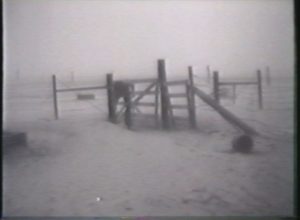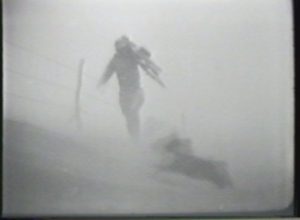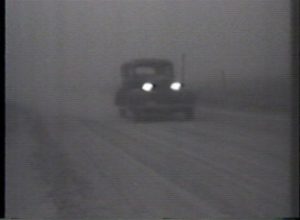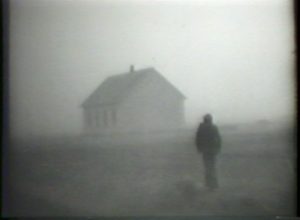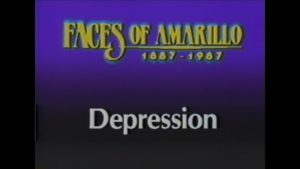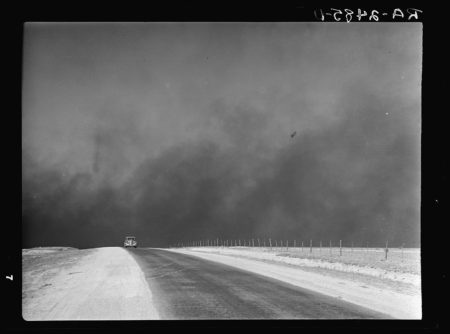
The Dust Bowl refers to a series of dust storms that devastated the panhandles of Texas and Oklahoma during the 1930s. The area of farmland doubled between 1900 and 1920, tripling by 1930. This expansion required the heavy use of mechanized farm equipment and extensive deep plowing of the land’s topsoil, devastating the grasses that would trap soil and moisture during periods of drought and high winds. As a drought began to take hold in Texas in the early thirties, winds would whip the unanchored soil into suffocating “black blizzards,” rendering human visibility to nearly zero. April 14, 1935, known as “Black Sunday,” produced 20 of the worst dust storms from Canada to Texas. Affected Texas cities included Dalhart, Pampa, Spearman, and Amarillo. These dusters eroded entire farmlands, destroyed Texas homes, and caused severe physical and mental health problems. The Dust Bowl exacerbated the effects of the Great Depression and sparked the largest American migration in the shortest amount of time. Millions of “Texies” were left homeless, abandoning their dust-ridden farms and making their way to California in search for brighter opportunities.



